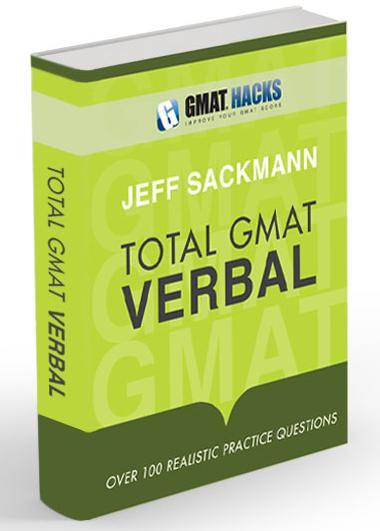
Bookshelf
|
|
Total GMAT Math Jeff's complete Quant guide, on sale now! |
|
|
Total GMAT Verbal Everything you need to ace GMAT Verbal! |
1,800 Practice Math Questions
Buy Jeff's books at Amazon.com

GMAT Official Guide, with IR
OG Math | OG Verbal
OG12 & Quant Rev solutions!
GMAT Question of the Day
Beginner's Guide to the GMAT
GMAT Hacks Affiliate Program

Recent Hacks

Categories
- General Study Tips
- Goals and Planning
- CAT Strategy
- The Mental Game
- GMAT Math Strategy
- GMAT Math Topics
- Mental Math
- Data Sufficiency
- Critical Reasoning
- Reading Comprehension
- Sentence Correction
- Analytical Writing Assessment
- Integrated Reasoning
- IR Explained
- Business School Admissions
- GMAT Prep Resources
- Practice Questions
- Total GMAT Math
- Total GMAT Verbal
- GMAT 111

IR Explained: Q24: Earthquake Attributes
August 3, 2012
| You should follow me on Twitter. While you're at it, take a moment to subscribe to GMAT Hacks via RSS or Email. |
This post is part of a series--IR Explained--that walks through the sample Integrated Reasoning questions provided in the latest edition of the GMAT Official Guide.
The introductory paragraph provides plenty of background information on this Table Analysis question: the definition of Greenwich Mean Time, along with how longitude and latitude work. Rather than spending a minute or two with the definitions, check the questions to see what information you will need.
The three questions cover "depths," "north of the equator," and time. Depth is its own, self-explanatory column in table, and time is easy to understand, leaving only "north of the Equator." As the intro explains, latitude is zero at the equator, increasing to 90 at the north pole, so if an earthquake is north of the equator, its latitude is positive. Ignore the rest.
24A sounds very work-intensive, but as is usually the case, it doesn't have to be. If you'll need both mean and median, start with median, the easy one. Sort the table by depths, putting those numbers in order. Knowing that there are 22 earthquakes listed, find the median by averaging the 11th and 12th in the list: (25+26)/2 = 25.5.
Calculating the overall average is a daunting task, so look for a way around it. The four largest numbers in the depth column are much, much bigger than the rest. If we simply add up the three largest, we have a total of roughly 1800. Even if we ignore the other 19 depths, the average would be 1800/22, which is roughly 80--far bigger than 25.5. 24A is Yes.
It's smooth sailing from here. For 24B, sort by latitude. As we've seen, if latitude is positive, the earthquake took place north of the equator. 10 of the 22 earthqakes have positive latitude, which is less than half, so 24B is No.
For 24C, sort by time. Count the rows with a time between 10:00:00 and 20:00:00 to discover that 9 fit that description. That's less than half of 22, so 24C is No.
Stay tuned (or subscribe) for more Integrated Reasoning explanations
About the author: Jeff Sackmann has written many GMAT preparation books, including the popular Total GMAT Math, Total GMAT Verbal, and GMAT 111. He has also created explanations for problems in The Official Guide, as well as 1,800 practice GMAT math questions.
 |
Total GMAT Verbal
The comprehensive guide to the GMAT Verbal section. Recognize, dissect, and master every question type
you'll face on the test. Everything you need, all in one place, including 100+ realistic practice questions. |